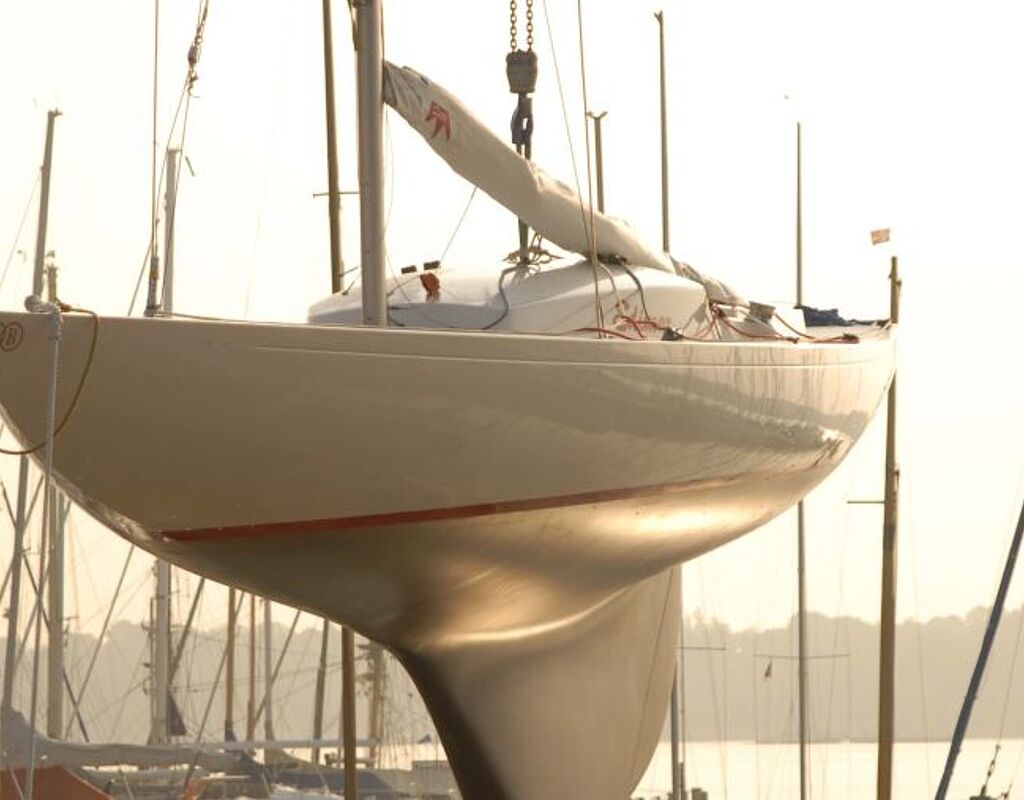Correct cranage - Yachts hanging by a thread
At the start and end of the water sports season, rows of motorboats and sailing boats can be seen dangling on crossbeams, straps and slings in marinas, sailing clubs and shipyards, with their owners agonisingly watching on. And they have good cause for concern as these lifting operations pose a high level of risk.

It's all about ensuring the right sling position
In commercially run winter storage facilities, these lifting operations are normally undertaken by the company's own staff or delegated to a specialist firm. The crane operator is responsible for ensuring that the machine is in good working order and that only suitable lifting gear is used. All the owner has to do is inform the foreman of the vessel's weight and sling positions, and follow their instructions.
In a sailing club, however, the owner is entirely responsible for the craning. Ensure that a crossbeam is always used with a crane hook, otherwise the yacht may slip out of the sling. Even if a crossbeam is used, the slings should be connected to one another for added security.
The most important aspect in terms of safety is to ensure that the slings are in excellent condition. Ensure that the breaking load of the sling is sufficient and check the condition. Dirty slings can easily lead to the exterior of the boat becoming scratched. Damage can also be caused if slings are too short. A long sling is a lot less likely to cut into the boat. This is particularly important if the boat has a protruding rubbing strake or a foot rail.

If your boat is being lifted by crane for the first time, it is important to ensure you position the sling correctly. The manufacturer or even owners of the same type of boat can often be of help here and can tell you the best way to position the slings. A tip for the next crane lift: Take a picture of the yacht hanging in the slings so you can recreate it easily at the start of the next season.
A propped up yacht normally rests on at least five points: on the four hull supports and on the keel. If the pressure on the supports is too great, however, this can cause dents in the hull. This type of damage can be avoided by first placing the boat on the keel and then slowly lowering it down on to the supports.
Secure the rig
In northern Europe, it is normal to lie the mast down in winter. On the Mediterranean, however, yachts can often be seen supported with their masts still standing. There is no real reason why a ship cannot be left rigged up. In this situation, however, the ship should be protected more strongly against accidents, for example with an extra fastening on the ground, as the rig adds a wind-exposed area and this can lead to vibrations and increased pressure on the supports or on the stand. Keeping the mast in position also makes it more difficult to maintain and check your yacht. Carbon fibre and wooden masts should always be taken down and either put in a mast storage facility or at the very least covered by a tarpaulin, as they are particularly sensitive to UV rays.
APPROVED BY FINANCIAL AUTHORITY
Pantaenius AB is an insurance intermediator and approved by financial authority. For more information please click here.
